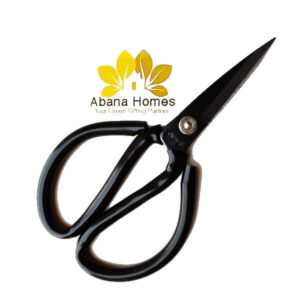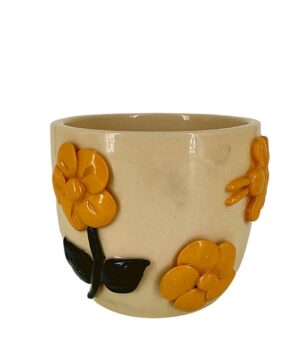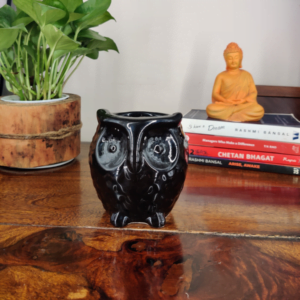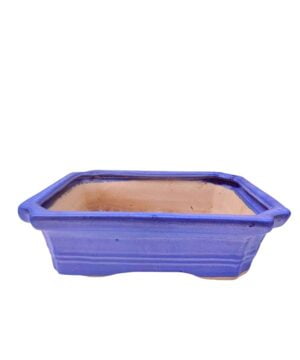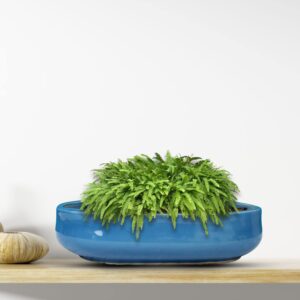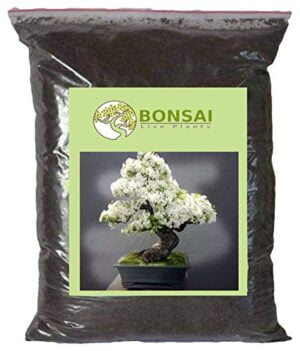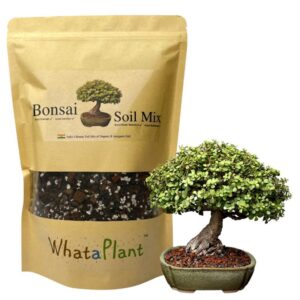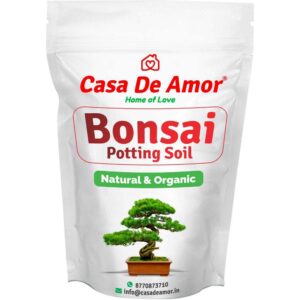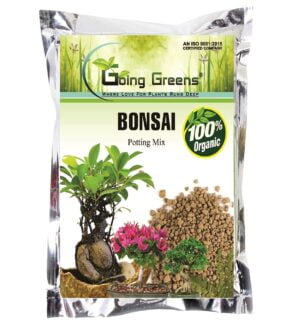When it comes to bonsai cultivation, choosing the right tools is essential. However, it is common for bonsai enthusiasts to become confused when deciding between stainless steel and carbon steel tools.
Well, there are a lot of bonsai tools, each with its own purpose. These tools are used for pruning, shaping, and wiring bonsai trees.
Typically, Bonsai tools are made of stainless steel or carbon steel. There are advantages and disadvantages to both materials, but each has unique qualities that determine which is best.
Stainless steel tools are durable and resistant to corrosion and rust. In contrast, carbon steel is sharp and retains its edge. Yet, in the end, the decision comes down to personal preference and the specific needs of the bonsai enthusiast.
Here, we will learn the differences between stainless steel and carbon steel bonsai tools, and provide insights to help you choose the right bonsai tools.
Stainless steel Vs Carbon Steel- Which is best?
Stainless steel and carbon steel are two materials you can choose from when it comes to bonsai tools. But which one do you think is best? Well, it all depends on what you want and need.
When it comes to bonsai tools, carbon steel would be the best option if you want something durable. Whereas, if you want tools that are easy to maintain and clean, stainless steel would be best. Ultimately, it’s all about what works for you.
Moreover, before you buy, consider their advantages and disadvantages. Like, it’s cheaper to buy carbon steel bonsai tools than stainless steel ones. Additionally, they’re easier to sharpen, which is great if you prune or shape your bonsai trees a lot.
However, carbon steel tools rust more easily than stainless steel ones. Although stainless steel bonsai tools cost more, they’re more corrosion-resistant. Because of this, they’re great for humid or salty environments. Plus, stainless steel tools hold an edge longer, so you don’t have to sharpen them as often.
For those just starting out, I recommend stainless steel bonsai tools. However, if you’re more experienced and need something more durable, carbon steel might be your best bet.
Here are some pros and cons of stainless steel and carbon steel
Stainless steel bonsai tools
| Pros | Cons |
|---|---|
| It is a very durable material, and bonsai tools made from it can last for years. | Bonsai tools made from stainless steel are more expensive. |
| For bonsai tools that are exposed to moisture, stainless steel is ideal. | Due to its weight, stainless steel bonsai tools can be heavier than other materials. |
| It’s easy to clean and maintain stainless steel bonsai tools. With alcohol or another disinfectant, you can sterilize them easily. | In spite of stainless steel’s durability, it can be brittle if dropped or mishandled. |
| For detailed pruning and trimming, stainless steel bonsai tools are ideal. | Due to their hardness, stainless steel blades are hard to maintain over time |
Carbon steel bonsai tools
| Pros | Cons |
|---|---|
| Carbon steel bonsai tools won’t bend or break due to their durability and strength. | In humid conditions, carbon steel bonsai tools can rust if not properly maintained and cared for. |
| Sharpening is less frequent with carbon steel bonsai tools due to their durability. | Regular cleaning, oiling, and sharpening are required for carbon steel bonsai tools. |
| The flexibility of carbon steel bonsai tools makes them ideal for pruning and shaping bonsai trees. | Unless properly dried after use, carbon steel bonsai tools can rust and corrode. |
| Bonsai tools made from carbon steel are often less costly than stainless steel tools. | Dropped or mishandled carbon steel bonsai tools can break or chip. |
Types of steel in bonsai tools
A wide range of steel bonsai tools is available in the market. Some of the types of steel include:
A) High carbon steel
The main source of steel’s hardness is carbon content. Depending on how much carbon is added, it will be harder or softer. It’s usually more than 0.6% carbon content and more than 60 HRC(hardness on Rockwell scale C)
B) White Steel
- This white steel #1 has a hardness of 63+ HRC and carbon content of 1.25-1.35 percent (officially called ‘high carbon steel in Japan)
- In terms of carbon content, White steel #2 is officially ‘high carbon steel #2 61-62 HRC, containing 1.05-1.15% carbon content.
- The white steel #3 60 HRC has a carbon content of 0.80-0.90% (officially referred to as ‘high carbon steel’).
C) Blue steel #1 & #2
In Japan, it is also known as Aogami, which is white steel with chrome and tungsten, and has HRC 58-60 & 63-65.
D) Super blue steel
It is a blue steel containing molybdenum and vanadium, HRC 63-64.
E) Powdered’ steel
Steels of this type can have hardnesses between 64-68 HRC – ZDP-189, for example, contains 3% carbon and 20% chromium, making it extremely hard and rust-resistant.
F) Medium carbon steel
In this steel, 0.3-0.6% carbon is present and the HRC is 60.
G) Low carbon steel
You do not want tools made of this material because it contains 0.3% carbon or less.
H) Stainless steel
In stainless steel, at least 11% of the metal is chromium, which prevents rusting.
Let us now examine the qualities that make bonsai tools of good quality.
Tools that are good for bonsai cutting
A bonsai cutting tool must possess the following properties:
(1) strength,
(2) edge retention,
(3) non-bending,
(4) longevity,
(5) rust resistance,
(6) cost to manufacture/purchase.
A steel manufacturer uses the term hardness to describe 1-3 of the above properties. Harder materials are stronger, more resistant to deformation by stress, and less likely to abrasion. Ease of sharpening is inversely related to hardness since resistance to deformation or abrasion means it is hard to sharpen.
However, a disadvantage of hardness is that it may break or snap under stress instead of deforming. Often, knives made from very hard steel can break or chip.
You need a high hardness number for a bonsai tool to be strong, hold its edge, and hold its shape. As it gets harder, sharpening becomes more difficult.
Stainless steel vs. carbon steel: Which is harder?
Carbon steel is harder than stainless steel. Its hardness makes it the perfect choice for applications that require strength and durability. However, carbon steel is more prone to corrosion and rust than stainless steel, so it’s important to choose the right material.
What is the best way to keep bonsai tools from rusting?
When it comes to bonsai tools, keeping them in good condition is essential. However, it is possible for your tools to rust if they are constantly exposed to moisture, such as a humid climate. The following tips will help you prevent rust from forming on your bonsai tools:
1. Whenever you’re done using your tools, wipe them down with a clean cloth and put them away. Also, dry them off right away if they get wet.
2. Once your bonsai tools are new, or have been sitting idle for a while, apply a thin layer of oil (such as mineral oil) to help prevent rust. For long-term storage, you can also use WD-40.
3. Make sure you store your bonsai tools in a cool, dark place when you’re not using them. As a result, rust won’t form on the metal surface.
4. When your tools get some rust spots, try removing them with vinegar or lemon juice (just rinse them off).
Buying Guide For Bonsai Tools
Here are some guidelines to follow when buying bonsai tools.
Check the edge design on cutting tools
Bonsai tools are mainly cutting tools. You need sharp edges for two reasons. It will make cutting easier for your hand and the tree. Secondly, you won’t have to sharpen it as often if it stays sharp for a long time.
When it comes to edges, you know that the more you bang them against things, the duller they become. That’s also true for bonsai tools.
Also, the cutting edge is where your tool’s edges meet when you close them (complete the cut). Oftentimes, poorly made tools have cutting edges that meet edge to edge, head to head, which is not good! Due to this, the edge dulls and flattens.
A side effect of this type of tool is that you don’t get a clean, complete cut every time since the edges are flattened. Because of this, scissors’ blades run side by side.
Material
You can choose between stainless steel and carbon steel. Each has its advantages and disadvantages. One of the biggest advantages of stainless steel is that it resists rusting much better than carbon steel. Additionally, with stainless, there’s less maintenance.
With carbon steel, the edge is much sharper and lasts for a longer period of time. Although carbon tools rust easier than steel tools, if you don’t leave them out in the rain, dry them off while working, and lightly oil them every now and then, you won’t have to worry about rusting them.
In terms of material, it really depends on personal preference. I’d recommend carbon steel. Besides being sharper, I like the way it feels and looks.
Manufacturing country
Next, you’ll see tools made in China and Japan. If your budget allows, I highly recommend tools made in Japan. They’re more expensive than their Chinese counterparts, but well worth it in the long run.
Because Japanese steel lasts longer and performs better, it lasts longer. As far as quality control goes, Japan’s better.
If you’re buying Chinese tools online, you’re taking a chance on the quality. There could be blemishes, edges not straight, not sharpened, rough operation, etc.
Still, there are some good Chinese bonsai tools out there. You can make sure the piece you’re buying is made right by touching and handling it.
How do I buy the best bonsai kit?
Firstly, it’s ok to buy good tools one at a time rather than a kit full of all the gadgets out there if that’s what it takes! Rather than buying 5 low-quality tools just to have them, you would be better off purchasing one quality tool.
If you have the budget for it and can afford to buy an entire tool set worth at least $400, that’s awesome!
The best approach to building your toolkit is to slowly add quality pieces one at a time. It becomes particularly important if you decide to stick with it and you grow more trees.
Additionally, tools that need constant sharpening or don’t cut right should not be used because you don’t want to be slowed down by them. Moreover, if you cut the tree badly, it will not heal well.
So, you don’t need to buy everything at once. Take your time and choose a good tool each time.
Do You Need Special Tools for Bonsai?
It’s not necessary to buy any special tools to start bonsai. The only tools you need are a sharp knife and a pair of pruning shears. While special bonsai tools are available, they aren’t necessary for beginners.
The following are some of the most common bonsai tools and what they’re used for.
Bonsai shears
They’re the most important bonsai tool. You can use them to shape branches or trim leaves. Make sure the bonsai shears you choose feel comfortable in your hand and are right for you.
- Original price was: ₹300.00.₹199.00Current price is: ₹199.00.
- Original price was: ₹300.00.₹199.00Current price is: ₹199.00.
Wire Cutters
To shape branches and trunks, bonsai wire is used. It’s necessary to use wire cutters to cut off the old wire or adjust the tension.
Knives
Having a sharp knife is essential for making clean cuts on branches and trunks. You can get a lot of different knives, so pick one that feels comfortable in your hand.
Bonsai Pots/Container
There are tons of different bonsai pots, so choose one that fits the size and style of your tree. Additionally, choose a pot with drainage holes so your roots won’t rot.
- Original price was: ₹300.00.₹199.00Current price is: ₹199.00.
- Original price was: ₹700.00.₹499.00Current price is: ₹499.00.
- Original price was: ₹700.00.₹499.00Current price is: ₹499.00.
- Original price was: ₹400.00.₹299.00Current price is: ₹299.00.
- Original price was: ₹100.00.₹99.00Current price is: ₹99.00.
- Original price was: ₹1,000.00.₹699.00Current price is: ₹699.00.
- Original price was: ₹1,000.00.₹699.00Current price is: ₹699.00.
- ₹599.00 – ₹899.00
Soil Scoop
With a soil scoop, you can transfer soil from bag to pot easily. You can also use it to remove old soil from roots during repotting.
Bonsai soil
As bonsai trees have shallow roots, this special mix of soil retains moisture and drains quickly.
- ₹199.00 – ₹699.00
- Original price was: ₹400.00.₹299.00Current price is: ₹299.00.
- Original price was: ₹500.00.₹399.00Current price is: ₹399.00.
- Original price was: ₹600.00.₹399.00Current price is: ₹399.00.
How do I choose which bonsai tools to buy first?
Your first purchase should be a watering wand or can. It’s great if you already have one, but if not, go buy one!
I would recommend shears as my next cutting tool since they are probably the most frequently used. Moreover, you don’t need bonsai-specific tools, but they should be sharp, fit the job and not be too small or large.
A concave or branch cutter should be purchased shortly after that. You might want to get this along with the shears at the same time. Don’t forget to get the right size for your trees. If you’re cutting a branch, make sure it’s not thicker than half the blade’s length.
Also, you need a root cutter. You will eventually need to repot, even if you are not currently doing so.
Next, you need a knob cutter. Same as always, make sure the size fits your trees. However, learn how to use the concave cutter first, then move on to this one.
You’ll need more tools as your tree collection grows, and as your trees start to get bigger. Tools such as trunk splitters and branch benders, etc.
Additionally, bonsai tools are available in a variety of sizes. In the end, what you need and when you need it will be determined by your trees and your actual needs.
Conclusion
Both stainless steel and carbon steel are used for bonsai tools, each with unique advantages and disadvantages. However, stainless steel tool is durable and resistant to corrosion, while a carbon steel tool retains their edge.
You can choose either of the two bases based on your preference and needs. Additionally, a bonsai tool can be made from high-carbon steel, white steel, blue steel, super blue steel, powdered steel, medium-carbon steel, or low-carbon steel.
Furthermore, it is important to choose steel with properties such as hardness, non-bending, longevity, rust resistance, and cost when buying bonsai tools. Also, after using, wipe the bonsai tools clean and dry them.
Apply a thin layer of oil before storing them to prevent them from rusting. Overall, the choice between stainless steel and carbon steel comes down to personal preference and needs.
Related Articles
- White spots on the leaves?- Powdery mildew on bonsai (identification and solution).
- Bonsai Bloom Booster: How Beer and Garlic Will Change Your Gardening Game!

- 9 Things You Must Stop Doing As a Bonsai Owner To Make Your Bonsai Live Longer
- Mastering Bonsai Care During Monsoon: A Comprehensive Guide

- Revive Your Bonsai Tree with These Proven Techniques!

- Top 15 Must-Have Bonsai Tools for Enthusiasts



